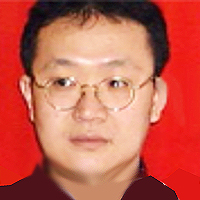Efficiency of Artificial Intelligence for Interpretation of Chest Radiograms in the Republic of Tajikistan
Published on: 25th November, 2024
The article presents data from recent publications and own data on screening studies with interpretation of chest radiographs using artificial intelligence CAD (Computer-Assisted Diagnosis), which, according to WHO recommendations, provides more accurate clinical thresholds for deciding who needs to take a sputum test. Another aspect of the WHO recommendations is the cost-effectiveness of CAD as a tool for triaging patients with tuberculosis symptoms in low-income countries with a high incidence of tuberculosis. Compared with smear microscopy and GeneXpert, without preliminary sorting, the use of mobile digital X-ray machines equipped with a CAD tool reduces costs, allowing sorting of individuals suspected of having tuberculosis for testing on GeneXpert, while reducing the time to start tuberculosis treatment.Thus, conducting a study using portable X-ray machines using a CAD program is a low-cost and easy-to-implement method, does not require large funds, does not require separate rooms, is highly effective, has good image quality, allows you to quickly clarify individuals suspected of having tuberculosis, differentiating it from other pathological changes in the lungs.Our experience shows that machine analysis of chest computed tomography data, due to the higher resolution capabilities of the method and the absence of fundamental disadvantages of radiography, including the effect of shadow summation, the presence of “blind” zones, etc., is finding increasing application in both diagnostics and screening of respiratory diseases. Our use of this tool allowed us to identify additional new cases of phthisio-onco-pulmonary diseases in field conditions.
Mass Serological Screening in the Armed Forces Using the Serum-Pooling Method. Analytical Evaluation of the Chemiluminescence Method
Published on: 18th February, 2025
Mass serological screening in the Armed Forces involves detecting serological markers of chronic infections, particularly viral hepatitis B and C, syphilis, and HIV among young militaryrecruits. The objective of this study is to evaluate the analytical performance of the chemiluminescence technique (CMIA-Architect i2000 SR) in mass serological screening using the serum-pooling method at the virology laboratory of the Mohammed V Military Teaching Hospital.Samples with known serological results (positive/negative) were grouped into pools of different sizes (2, 5, 10, and 15 sera). These pools were tested using chemiluminescence (CMIA-Architect i2000 SR). A cost analysis was conducted to assess potential savings based on seroprevalence and pool size.Results showed that the pooling method maintained 100% specificity. Overall sensitivities for detecting positive samples were 93.1% for HBV, 83.33% for HCV, and 86.36% for HIV. Positive and negative predictive values were high for all three viral markers, highlighting the reliability of the pooling method. Additionally, this approach generated significant cost savings, ranging from 46% to 80%. Conclusion: This study demonstrated the solid analytical performance of the chemiluminescence technique (CMIA-Architect i 2000 SR) using the serum-pooling method for detecting HBV, HCV, and HIV serological markers in low-seroprevalence regions.
















